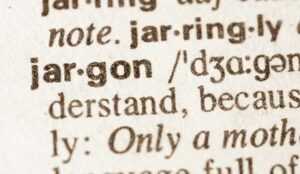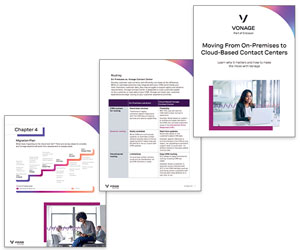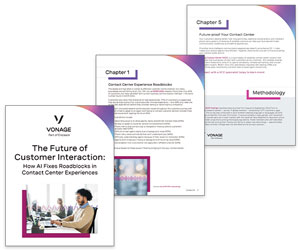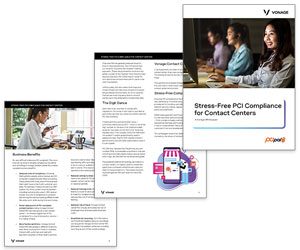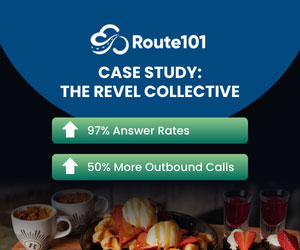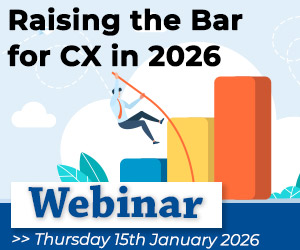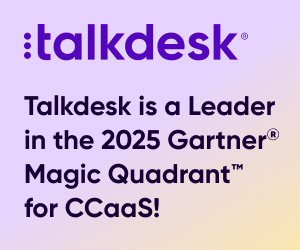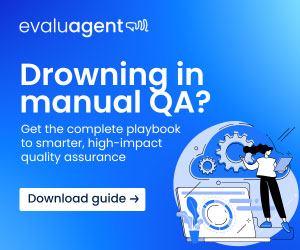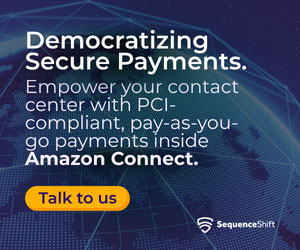Vonage helps you understand what spam calls are, why your outbound calls may be getting flagged, and – most importantly – how to prevent this issue from disrupting your business.
Outbound contact centre calls are an important way for businesses to connect with customers. But what happens when these calls are incorrectly flagged as spam or fraud? It’s a frustrating issue that impacts your ability to reach customers and can harm your brand reputation.
What Are Spam or Fraud Calls?
Let’s start with a level set on what outbound contact centre calls and spam calls actually mean.
Outbound Contact Centre Calls
These are phone calls initiated by contact centre agents. An agent will reach out to potential customers for things like sales, market research, and lead generation, or to existing customers for service needs.
This differs from inbound calls, where customers call a service line and connect with a company’s contact centre.
While we’re talking definitions, it’s important to note the difference between contact centres and call centres. Call centres were the traditional model, where phone calls were the only way for businesses and customers to interact.
In modern contact centres, businesses can use various communication channels to connect, from phone to email and chatbot to SMS messages.
Spam Calls
Spam calls are unsolicited commercial calls. To protect consumers, phone companies utilize tools to block and flag spam calls. These measures are focused on reducing robocalls and other unwanted communications, and protecting consumers from telemarketing scams.
- Proactive blocking – Some phone carriers block calls based on suspicious patterns, like high volumes or inconsistencies.
- Consumer settings and apps – Consumers can adjust settings on their phones or sign up for third-party services and apps that block suspected spam calls.
- Call recipient feedback – When enough consumers manually mark a number as spam, it can trigger phone carriers to flag future calls from that number.
While these tools are meant to be helpful for consumers, they sometimes create incorrect spam flags for legitimate business numbers.
Why Are Your Outbound Contact Centre Calls Marked as Spam?
Even if the intention is completely legitimate, outbound contact centre calls can be flagged as spam. Here are some common causes behind this:
- High call volumes – Making a large number of calls from the same number can raise red flags.
- Cold starting numbers – If you move from making zero calls to placing hundreds per hour, it can be seen as suspicious activity.
- Double or triple calling – Repeatedly calling the same number within a short period increases the likelihood of getting flagged.
- Short-duration calls – Calls lasting less than five seconds often signal automated systems, triggering spam filters.
- Manual reporting – Call recipients may flag your number as spam, particularly if the calls are unsolicited or poorly executed.
- Regulatory non-compliance – Not adhering to regulations like the Telephone Consumer Protection Act (TCPA) in the US can lead to your number being flagged.
- Lack of prior relationship – Calling customers without prior consent or an existing commercial relationship can increase both complaints and flags.
- Actual spam practices – Even if unintentional, unsolicited commercial calls meet the technical definition of spam in many regions and may result in legitimate consumer complaints.
Being flagged as spam doesn’t always mean you’ve done something wrong, but it’s a clear sign that your outbound calling practices present risks or need optimization.
How Can You Avoid This Issue at Your Business?
These best practices and strategies can help you ensure that your calls don’t end up being marked as spam.
1. Caller ID Verification and Registration
- Use a reliable provider: Partner with a reputable Contact Centre as a Service (CCaaS) provider.
Register Your Numbers
Register your numbers with industry-standard authentication technology like STIR/SHAKEN, which stands for the Secure Telephone Identity Revisited (STIR) and Signature-based Handling of Asserted Information Using toKENs (SHAKEN) standards.
It authenticates and verifies caller ID information for calls made using Internet Protocol (IP) networks. In short, the caller ID will be identified as legitimate before reaching consumers.
- Maintain accurate information: Keep your caller ID details, such as your company name and number, consistent and up to date.
2. Adhere to Ethical and Best Dialling Practices
- Clear identification – Train your agents to introduce themselves and your company clearly at the start of every call.
- Avoid aggressive dialling – Resist practices like robocalling or excessive attempts to reach the same number. This can trigger spam filters.
- Respect Do-Not-Call (DNC) lists – Ensure compliance with local and national DNC lists to avoid unauthorized calls.
- Agent training – Invest in training your agent team on ethical calling practices to strengthen their communication skills and avoid any spam-like behaviour.
- Avoid cold calls (unless permitted) – If a prospect or an existing customer hasn’t given explicit permission to contact them, you risk being correctly flagged for spam.
3. Monitor Call Quality and Compliance
- Quality assurance – Regularly perform audits of your outbound contact centre calls to ensure compliance with best practices.
- Track analytics – Leverage analytics to monitor calling patterns and identify any unusual activities. In analysing the data, you may also find new strategies to adjust your approach.
- Regulatory compliance – Stay current on relevant laws and regulations.
4. Leverage Advanced Technology
- AI tools for analysis – Use AI-powered analytics to monitor call outcomes and proactively address issues.
- Optimize call routing – Improve caller experience by using smart routing techniques to reduce wait times. Reduced wait times equal improved customer satisfaction, a key part of contact centre success.
5. Use Advanced Features to Enhance Interactions
- Call recording insights – A call recording feature can help pinpoint communication errors to avoid negative patterns and improve agent interactions with customers.
- Screen sharing – When contact centre agents can share their computer screen with customers during a video call, it creates a more interactive and visual experience.
6. Build Trust and Reputation
- Transparency – Clearly inform customers of who you are and why you’re calling. Understanding the purpose can make them less likely to report the number.
- Value customers’ time – Keep conversations concise and relevant to respect customers’ schedules and avoid untimely calls or unnecessary delays.
- Proactive complaint management – Address complaints promptly to maintain a positive customer relationship and protect your brand’s reputation.
Getting Started
Now it’s time to ask yourself, “Are calls flagged as spam disrupting operations and outreach in my company’s contact centre?” If the answer is “yes,” it’s time to make the call for a better communications strategy, led by best practices and regulation compliance.
This blog post has been re-published by kind permission of Vonage – View the Original Article
For more information about Vonage - visit the Vonage Website
Call Centre Helper is not responsible for the content of these guest blog posts. The opinions expressed in this article are those of the author, and do not necessarily reflect those of Call Centre Helper.
Author: Vonage
Reviewed by: Rachael Trickey
Published On: 8th Jul 2025
Read more about - Guest Blogs, Vonage






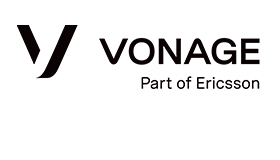 Vonage is redefining business communications, helping enterprises use fully-integrated unified communications, contact centre and programmable communications solutions via APIs.
Vonage is redefining business communications, helping enterprises use fully-integrated unified communications, contact centre and programmable communications solutions via APIs. 


